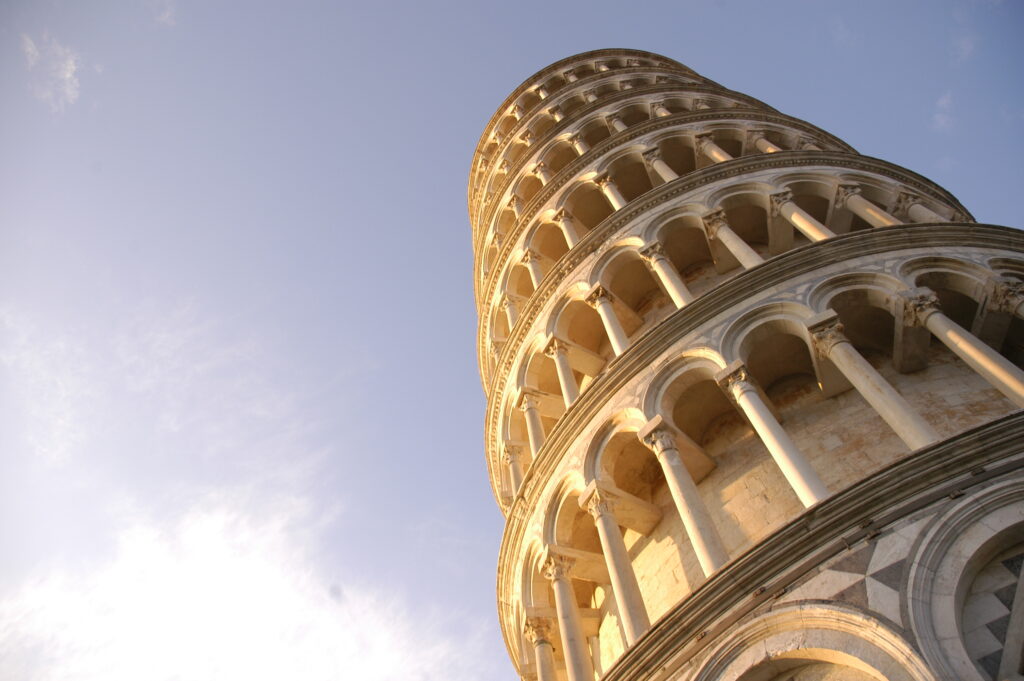The Affinity Between Italian and Latin: A Linguistic Deep Dive
The Legacy of Language
In the vast tapestry of human history, few languages have left an indelible mark as profound as Latin. Revered as the lingua franca of the ancient world, Latin’s echoes resonate powerfully even today, influencing a myriad of modern tongues. One of its most illustrious descendants is Italian, a language that not only shares Latin’s lexical richness but also embodies its rhythmic essence. This article embarks on a journey to explore the intertwined destinies of Italian and Latin, unraveling their shared heritage and distinctive identities.
1. The Romance Connection: Unraveling Italian’s Latin Roots
- What are Romance languages? A Quick Primer
- Deriving their name from “Roman,” Romance languages are the modern descendants of the Latin language, spoken primarily in Europe and the Americas. Some of the major Romance languages include Spanish, Portuguese, French, and, of course, Italian. Wikipedia link
- Italian’s Cornerstone Position Among Romance Languages
- Among its Romance siblings, Italian boasts a special status. Often considered the closest to Latin in terms of vocabulary and structure, it serves as a living testament to the ancient language’s grandeur.
2. The Quintessence of Vocabulary: Italian vs. Latin
- The Overlap and Divergences in Vocabulary
- Words like ‘aqua’ in Latin becoming ‘acqua’ in Italian or ‘manus’ in Latin transforming to ‘mano’ in Italian showcase the lexical transitions.
- The Lexical Bridge
- It’s estimated that up to 80% of Italian vocabulary finds its roots in Latin, making it a treasure trove for linguists and history aficionados alike.
3. The Journey from Vulgar Latin to Modern Italian
- The Dual Face of Latin: Vulgar vs. Literary
- While Literary Latin was the domain of scholars, poets, and the elite, Vulgar Latin was the colloquial version spoken by the masses. This Vulgar Latin, influenced by regional dialects and cultures, became the foundation for today’s Romance languages. Wikipedia link
- Tracing the Footsteps of Evolution
- As the Roman Empire expanded, so did Latin. However, with the fall of the empire, isolated pockets began developing their unique dialects. Over centuries, these dialects matured into full-fledged languages like Italian.
- Tuscany’s Linguistic Legacy
- The Tuscan dialect, buoyed by literary works like Dante’s “Divine Comedy,” gradually gained prominence, evolving into what we recognize as modern standard Italian.
4. Unveiling Syntax and Structure: Italian’s Nod to Latin
- A Comparative Look at Sentence Structures
- Both Italian and Latin follow the Subject-Verb-Object (SVO) structure, but there are nuances. For instance, Italian, like Latin, often omits the subject when it’s clear from the context.
- Preserving Syntactical Nuances
- Italian retains many grammatical complexities from Latin, such as declensions, though not as extensively. The gendered nature of nouns, adjectives agreeing with nouns, and the extensive conjugation of verbs are all hallmarks of its Latin ancestry.
5. Dialectical Diversities: Exploring Italian’s Regional Linguistic Varieties
- The Panorama of Italian Dialects
- Italy, with its rich history of city-states and regional powers, has birthed a plethora of dialects. From Neapolitan in the south to Lombard in the north, each dialect adds to Italy’s linguistic mosaic.
- Sardinian: The Linguistic Time Capsule
- Often regarded as the closest living relative to ancient Latin, the Sardinian dialect (or language, as some argue) offers fascinating insights. Its isolation in the island of Sardinia ensured it remained less influenced by external linguistic forces, making it a window to the past. Wikipedia link
This exploration into the world of Italian and Latin paints a picture of linguistic evolution, showcasing how languages, while constantly changing, carry forward legacies from their ancestors. As we delve deeper into other facets of this relationship in subsequent sections, it’s evident that the dance between Italian and Latin is a timeless tale of preservation, transformation, and enduring elegance.
Traversing Through Linguistic Labyrinths: Italian, Latin, and Beyond
6. Addressing Common Myths and Queries:
The romance between Latin and Italian, like any age-old story, is often clouded by myths, misconceptions, and queries. Here, we attempt to shed light on some of the most common questions and unravel the enigma surrounding these two illustrious languages.
- Is Modern Italian Just a Continuation of Latin?
- At first glance, it’s tempting to view Italian as merely an updated version of Latin. While Italian indeed evolved from Latin, particularly the Vulgar Latin spoken by the masses, it has undergone significant transformations over the centuries. Factors like invasions, migrations, and cultural exchanges have all played a role in shaping Italian. Thus, while it retains a substantial Latin core, modern Italian is a distinct language with its unique nuances. Wikipedia link
- Decoding the Ability of Italians to Comprehend Latin:
- A common assumption is that Italians, due to their linguistic lineage, can effortlessly understand Latin. In reality, while there might be familiar words or phrases, comprehending classical Latin texts would be challenging for the average Italian speaker. Studying Latin is much like studying any foreign language for them.
- Dissecting the Differences: Latin vs. Italian:
- Beyond vocabulary, there are structural differences:
- Gender: Latin had three genders (masculine, feminine, neuter), while Italian streamlined to two (masculine and feminine).
- Articles: Latin didn’t employ articles, whereas Italian does (e.g., “il,” “la”).
- Syntax: Over time, Italian has simplified some of the syntactical structures that were more complex in Latin.
- Beyond vocabulary, there are structural differences:
- The Question of Greek: How Does It Compare to Italian and Latin?
- While Greek and Latin are both ancient languages that have significantly influenced the development of Western civilization, they belong to different language families (Greek is Hellenic, and Latin is Italic). Greek’s influence on Latin and subsequently Italian is primarily lexical, introducing words related to art, philosophy, and science. However, structurally and phonetically, Greek is distinctly different from both Latin and Italian. Wikipedia link
7. The Global Linguistic Database: Ethnologue’s Perspective:
Ethnologue, a comprehensive reference work cataloging all of the world’s known living languages, provides fascinating insights into the relationship between Italian, Latin, and other Romance languages.
- Lexical Similarity Indices:
- Italian’s lexical similarity percentages, as per Ethnologue, are enlightening:
- French: 89%
- Catalan: 87%
- Sardinian: 85%
- Spanish: 82%
- Portuguese: 80%
- Ladin: 78%
- Romanian: 77%
These figures underscore Italian’s proximity to Latin while also highlighting its close ties with other Romance languages.
- Italian’s lexical similarity percentages, as per Ethnologue, are enlightening:
- The Influence and Spread of Romance Languages Globally:
- Romance languages, owing to colonial and cultural expansions, have found speakers across continents. Spanish in the Americas, French in Africa and parts of Asia, and Portuguese in Brazil and parts of Africa, showcase the global footprint of the Latin legacy. Wikipedia link
8. Contemporary Italian: Multilingualism and Beyond:
Modern Italy, while deeply rooted in its linguistic traditions, is no stranger to the global winds of change.
- Can Italians Understand Other Romance Languages, Especially Spanish?
- Due to the shared Latin ancestry, there’s a substantial overlap in vocabulary between Italian and other Romance languages. While not mutually intelligible, Italians can often grasp the gist of Spanish or Portuguese, especially with some exposure or study.
- The Fading Echo of Latin: Why Is It No Longer a Spoken Language?
- Latin’s decline as a vernacular can be attributed to various factors:
- The fall of the Roman Empire led to regional isolations, giving rise to distinct dialects.
- The spread of Christianity in the Middle Ages saw Latin’s role consolidated as the liturgical language of the Church, while the masses began speaking evolved forms of Vulgar Latin.
- Over time, these evolved forms crystallized into the distinct Romance languages we recognize today.
- Latin’s decline as a vernacular can be attributed to various factors:
- Italian’s Embrace of Multilingualism:
- Contemporary Italy, influenced by globalization, migration, and cultural exchanges, is increasingly multilingual. English, German (especially in regions like South Tyrol), and immigrant languages like Albanian, Arabic, and Chinese, are steadily making their mark on Italy’s linguistic landscape.
In this exploration, we’ve journeyed through time, from the lofty annals of Latin to the bustling streets of modern Italy, witnessing the ebb and flow of languages. What stands out is the enduring spirit of Italian, a language that, while paying homage to its venerable Latin roots, continues to evolve, adapt, and thrive in a dynamic world.
9. Delving Deeper: Other Languages Influenced by Latin
Latin’s legacy is not limited to the familiar Romance languages. Its tendrils have reached out to shape and influence a vast linguistic landscape across Europe and even beyond.
- The Legacy of Latin Across Europe: Beyond Italian
- French: Often dubbed the language of love, French has a deep-seated Latin core, with almost 90% lexical similarity with Italian. The Gauls, originally Celtic speakers, were Latinized following the Roman conquest, leading to the evolution of Old French and subsequently modern French. Wikipedia link
- Spanish: With the Roman colonization of the Iberian Peninsula, Latin replaced native Iberian languages, setting the stage for the emergence of Spanish or Castilian. Wikipedia link
- Portuguese: Another gem from the Iberian Peninsula, Portuguese evolved from Latin-based dialects post the decline of Roman rule. Its spread to Brazil and parts of Africa also showcases the global influence of Latin. Wikipedia link
- Romanian: A testament to the far-reaching influence of Rome, Romanian, spoken in Eastern Europe, traces its roots to the Latinized Dacians following Roman conquests. Wikipedia link
- Latin Imprints Outside the Romance Family:
- English: While primarily Germanic, English has a substantial number of Latin-derived words, primarily due to the Norman Conquest and the Renaissance period’s scholarly endeavors. Words like “legal” or “temperate” showcase Latin’s indirect influence. Wikipedia link
- Celtic Languages: Latin influence can be seen in modern Celtic languages, especially in vocabulary related to Christianity and civilization.
- German: Though a Germanic language, Latin’s influence on German is palpable, especially in scholarly and ecclesiastical terms.
10. FAQs: Tackling Popular Inquiries
- Why is Latin called a ‘dead language’?
- While Latin is no longer spoken as a native language, it’s very much alive in academia, scientific taxonomy, legal terminologies, and the Roman Catholic Church. It’s termed “dead” because it lacks native speakers and has no evolving vernacular community. Wikipedia link
- How many languages did Latin give birth to?
- Latin is the progenitor of the Romance languages, including Italian, Spanish, French, Portuguese, Romanian, and several others.
- Is Latin still taught today?
- Absolutely! Latin is taught in many schools and universities, especially for students of classical studies, theology, history, and linguistics.
- How did Latin spread across Europe?
- The expansion of the Roman Empire, coupled with administrative, legal, and educational frameworks, facilitated Latin’s spread and dominance across Europe.
11. Resources & Further Exploration
For those eager to delve deeper into the mesmerizing world of languages and their intricate histories, the following resources are invaluable:
- Linguistic Databases: Ethnologue provides comprehensive data on languages worldwide.
- Historical Records: The Latin Library offers a vast collection of Latin texts from different eras.
- Academic Research: JSTOR and Google Scholar are excellent platforms to access scholarly articles on Latin, Italian, and linguistic evolution.
:
As we stand at the crossroads of history and modernity, Italian emerges as a vibrant beacon, testifying to the grandeur and resilience of Latin. Its lilting cadences, rich vocabulary, and intricate structures are a living mosaic of tales from the past. In Italian, and indeed in many languages worldwide, we hear the echoes of Latin – a language that once unified an empire and now lives on, fragmented yet immortal, in its many descendants.
For linguists, historians, and enthusiasts, this tapestry of languages offers endless avenues of exploration. It’s a testament to human civilization’s ability to communicate, adapt, and evolve. So, the next time you utter an Italian phrase or stumble upon a Latin quote, take a moment to marvel at the intricate web of linguistic evolution that connects epochs, empires, and people.




